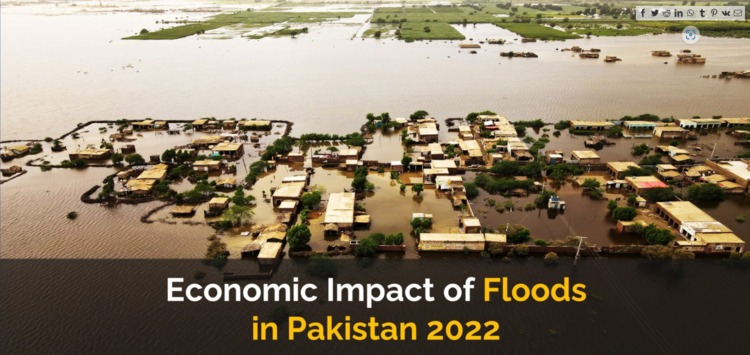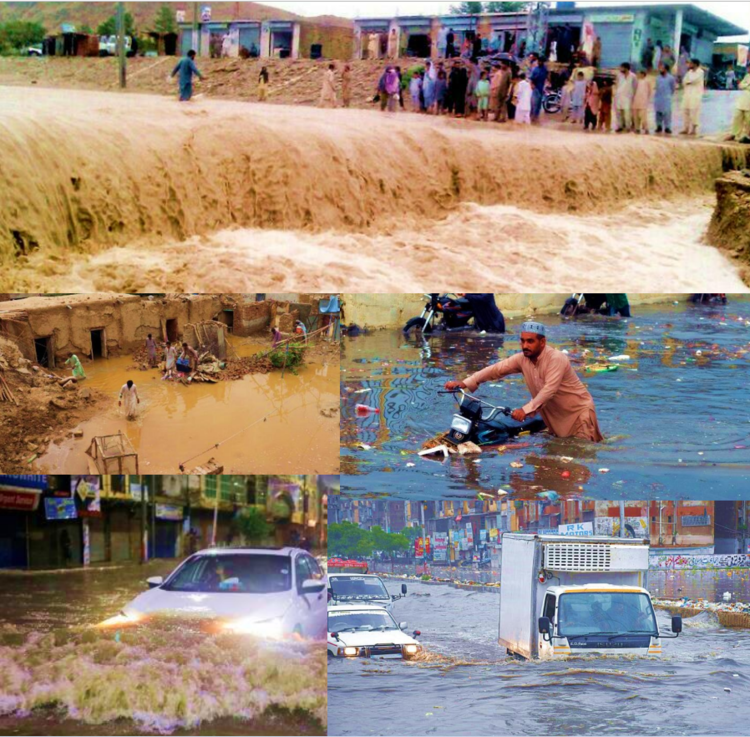
Newsnomics AJAY ANGELINA reporter | The most devastating flood hit the vast areas of Baluchistan, South
Punjab and Sindh in the history of Pakistan this Summer 2022 due to climate change.
This massive flood after heavy monsoon in June and July with melting glaciers has left long-lasting destructions in 116 districts of Pakistan including 84 that have been declared as calamity hit. About 1,717 people have died including 639 children,12,867 injured, over 1.1 million livestock animals perished, over 2,000 health facilities have been affected, 13,115 KM of roads partially or fully damaged and 436 bridges destroyed, limiting the aid delivery to those in need.
As reported by Islamic Relief Pakistan on Oct 12; more than 4.4 million acres of crops and orchards have been affected, with at least 304,000 acres in Baluchistan, 438,000 acres in Punjab, and over 3 million acres in Sindh while 60,752 acres cultivated area all over the province of KP (Khyber Pashtun) destroying 97,063 metric tons
standing crops and inflicting Rs9.16 billion losses on farmers.
According to Dawn News, over 1.4 million acres of cotton, 602,120 acres of rice, and 101,379 acres of dates,
sesame, tomato, chili, Kharif vegetables, onion, 50% of the sugarcane crop on 729,582 acres and all of their
crops damaged. The sowing of wheat, which was required in the following two months, would be extremely
difficult. It is anticipated that the flood water would not completely drain from the farmers’ fields in two
months.”

Recent flood situation in Pakistan 2022 presented by (PHF) Pakistan Humanitarian Forum and (NHN) national Humanitarian Network Pakistan
Not only that the victims of flood are still facing extreme difficulty in meeting their essential needs of clean
drinking water, destructive corps, food scarcity, hunger and much of the vital infrastructure, such as roads,
sanitation and health facilities. The situation remains tense weeks after the disaster, with large parts of southern Pakistan still under water. Standing water becomes the breeding ground for infectious diseases. Diarrhea,
typhoid, cholera and malaria is spreading even in the surrounded areas and endangering even more lives.
"We are witnessing the next humanitarian catastrophe. People are drinking contaminated water and getting
diarrheal diseases. Mosquitoes are nesting in the water residue more and more people are getting infected
with malaria and dengue fever. At the same time, there is hardly any way for them to get to the hospitals,
as either the access roads or the facilities have been destroyed by the masses of water," says Cordula Wasser, Head of the Asia Department of Malteser International.
2022년 여름 파키스탄 역사상 가장 파괴적인 홍수가 발루치스탄, 사우스 펀자브 및 신드의 광대한 지역을 강타했다. 6월과 7월에 빙하가 녹는 심한 몬순 이후에 발생한 이 대규모 홍수로 파키스탄의 116개 지역이 오랫동안 파괴되었다. 재난 재해로 선언된 84개. 어린이 639명, 부상 12,867명, 가축 110만 명 이상의 사망, 2,000개 이상의 의료 시설이 영향을 받았으며, 13,115km의 도로가 부분적으로 또는 완전히 손상되었으며, 436개의 다리가 파괴되어 도움이 필요한 사람들에게 구호품 전달이 제한되는 등 약 1,717명이 사망했다.
10월 12일 파키스탄 이슬람 구호단체에서 보고한 바; 440만 에이커 이상의 농작물과 과수원이 영향을 받았으며, 최소 Baluchistan 304,000에이커, Punjab 438,000에이커, Sindh 300만 에이커가 KP(Khyber Pashtun) 전역의 경작지 60,752에이커를 파괴했다. 메트릭 톤의 작물을 재배하고 농부들에게 91억 6천만 루피의 손실을 입혔다.
Dawn News에 따르면 140만 에이커 이상의 면화, 602,120에이커의 쌀, 101,379에이커의 대추, 참깨, 토마토, 칠리, 카리프 야채, 양파, 729,582에이커의 사탕수수 작물의 50%가 피해를 입었으며 모든 작물이 피해를 입었다. 다음 두 달 동안 요구되는 밀 파종은 극도로 어려웠을 것입니다. 두 달 안에 농경지에서 홍수 물이 완전히 빠지지 않을 것으로 예상됩니다.”
홍수 피해자들은 깨끗한 식수, 파괴적인 군단, 식량 부족, 기아 및 도로, 위생 시설 및 의료 시설과 같은 필수 기반 시설에 대한 필수 요구 사항을 충족하는 데 여전히 극도의 어려움에 직면해 있다. 재난이 발생한 후 몇 주 동안 상황은 여전히 긴장 상태로 남아 있으며 파키스탄 남부의 대부분은 여전히 물에 잠겨 있다. 고인 물은 전염병의 온상이 돼다. 설사, 장티푸스, 콜레라, 말라리아는 주변 지역에서도 확산되어 더 많은 생명을 위협하고 있다.
Malteser International의 아시아 부서 책임자인 Cordula Wasser는 "우리는 다음 인도적 재앙을 목격하고 있다"고 강조했다. 이어 "사람들은 오염된 물을 마시고 설사병에 걸리고 있다. 모기는 물 잔류물에 둥지를 틀고 점점 더 많은 사람들이 말라리아와 뎅기열에 감염되고 있다. 동시에 진입로나 시설이 대량의 물에 의해 파괴되어 병원에 갈 수 있는 방법이 거의 없다"고 설명했다.










